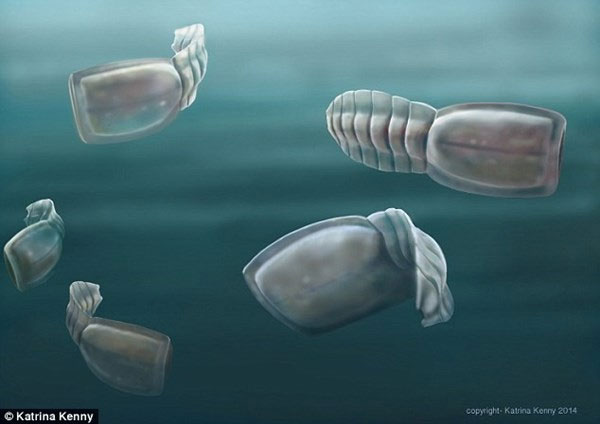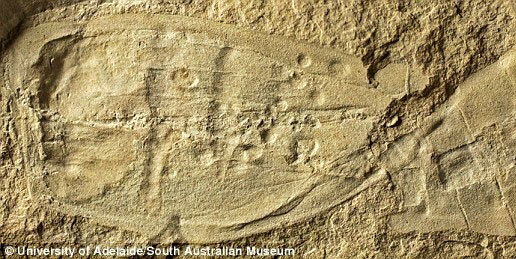Vetulicolian - Strange creatures have distant relatives with humans
Scientists have just placed a bizarre marine creature living on the earth's oceans 500 million years ago into the distant "relatives" of humanity.
In fact, scientists have discovered the fossil of the Cambrian marine animal since 1911. At that time, they named this vetulicolian species. From fossil samples, scientists say this is a blind creature that once inhabited the earth's oceans 500 million years ago. In particular, this creature possesses a slender structure along the body, the body tightening as shown in figure 8.
This organism's strange surgery has made it difficult for researchers to arrange their position in the evolutionary tree. But now, this issue has been resolved.

Vetulicolian - Sea creatures have a peculiar shape.
In a new study published in the journal BMC Evolutionary Biology, scientists believe that vetulicolian should be classified as vertebrates.'Although they are not directly related to humans in the evolutionary tree, we can confirm that this creature is one of our distant cousins' - Dr. Diego Garcia-Bellido from the University of Adelaide Environment Institute, the study's lead author said.
'Vetulicolian species have a close family to vertebrates, including humans. The vetucolian has a long tail, supported by a solid bar structure. This hard rod is like a live wire - the precursor of the spine. This is a typical feature of vertebrate animals compared to other species, " said Dr. Diego Garcia-Bellido.
Today, vetulicolian fossils have been discovered in many countries around the world, including Canada, Greenland, China and Australia.

Fossils of vetulicolian.
Latest findings on vetulicolian have been found on fossils discovered on Kangaroo Island, off the southern coast of Australia.
'Vetulicolian' is a proof that life in the Cambrian period is very diverse and abundant, even in some respects more than today, with many sub-branches in the evolutionary tree, ' said Dr. Garcia-Bellido. "These are simple creatures that grow strongly both in quantity and in global distribution. They are also one of the first representatives of human relatives, next to species of subdivision of tails or pangasius. "
The title has been changed.
- Strange creatures glow themselves to catch prey
- The sea creature suspects them with the Loch Ness monster in Alaska
- Image simulating living creatures on the planet near red dwarfs
- Discovering strange sea creatures suspected of being aliens in America
- Humans evolved due to climate change?
- Orangutans, not chimpanzees, are the closest relatives of humans
- Discover 4 strange sea creatures with human-like teeth
- Thousands of strange creatures like jellyfish drifted to the California coast
- Look for strange signals from distant exoplanets
- Detect the bizarre red creature without eyes, mouth
- 13 most terrifying and mysterious creatures in the world
- Discovered a strange mushroom creature off Australia
 Discovered an ancient centipede fossil 99 million years old
Discovered an ancient centipede fossil 99 million years old Discovered bat-like dinosaurs in China
Discovered bat-like dinosaurs in China Discovered a 200-year-old bronze cannon of the coast
Discovered a 200-year-old bronze cannon of the coast Discover 305 million-year-old spider fossils
Discover 305 million-year-old spider fossils